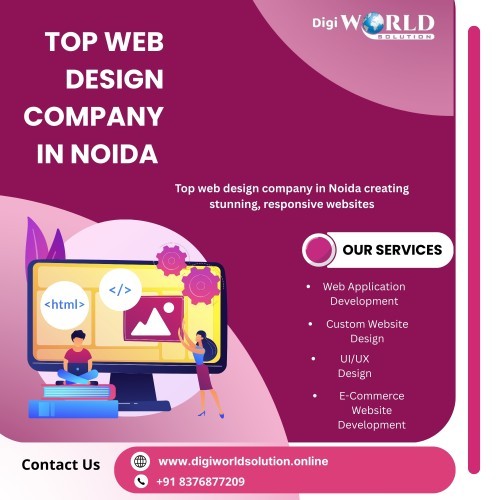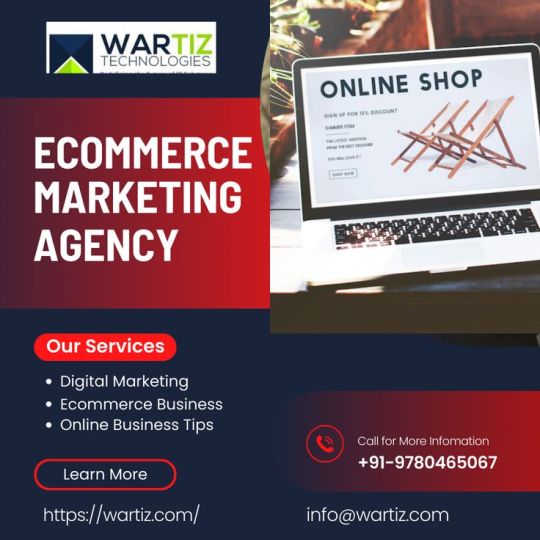#WooCommerce guide
Explore tagged Tumblr posts
Text
WooCommerce vs Shopify – What to Choose for Your Business?

Are you planning to launch an online store but confused between WooCommerce and Shopify? Intellistall brings you a detailed guide in our latest blog, “WooCommerce vs Shopify – What to Choose for Your Business?”. We compare the two leading eCommerce platforms on key factors like pricing, ease of use, features, customization, and long-term scalability. Whether you're a first-time entrepreneur or a growing business, this blog will help you understand which platform suits your business model best. At Intellistall, we’re committed to helping you make smarter digital decisions. Discover the pros and cons of both WooCommerce and Shopify, uncover hidden costs, and learn which one aligns with your goals and technical needs.
Call: +91-7494955535, +91-7015165894 Mail: [email protected]
#WooCommerce vs Shopify#Shopify vs WooCommerce#eCommerce platforms comparison#Best eCommerce platform 2025#WooCommerce guide#WooCommerce or Shopify#Small business eCommerce#eCommerce for beginners#Shopify tutorial#WooCommerce setup#WooCommerce pros and cons#Shopify pros and cons#Choosing eCommerce platform#Digital business tips#Shopify alternatives#WordPress eCommerce#eCommerce decision making
0 notes
Text
How to Start Dropshipping with EPROLO: A Guide for Beginners
Hello everyone!
If you're considering diving into the exciting world of dropshipping, you're in for a treat! With the right tools and resources, starting your own dropshipping business can be a fulfilling journey. One of the best platforms to help you kickstart this adventure is EPROLO.
So, how to start dropshipping with EPROLO? Here are some friendly tips to get you going:
Choose Your Niche: Think about what products excite you. It's essential to select a niche that you're passionate about and that has a demand in the market.
Set Up Your EPROLO Account: Sign up for an EPROLO account. The platform offers a user-friendly interface that makes it easy to navigate through products and manage your store.
Select Products: Browse through EPROLO's extensive catalog and choose products that align with your niche. Make sure to consider quality and shipping times.
Create Your Online Store: You can easily integrate EPROLO with popular eCommerce platforms like Shopify or WooCommerce. Setting up your store is straightforward, and EPROLO provides guidance along the way.
Market Your Store: Once your store is set up, it's time to spread the word! Use social media, SEO, and other marketing strategies to attract customers to your store.
Focus on Customer Service: Providing excellent customer service will help you build a loyal customer base. Always be ready to assist your customers with their queries and concerns.
Starting your dropshipping journey with EPROLO can be a rewarding experience. With dedication and the right approach, you can build a successful online business. Happy dropshipping!
Best of luck to all aspiring entrepreneurs!
0 notes
Text
For the past three years, we’ve curated a gift guide to feature some awesome Woo stores, and to offer around 40 different gift ideas that span a broad range of geographies and interests.
0 notes
Text
Flatsome WooCommerce Theme Guide: Unlocking the Potential of Your E-Commerce Site
I’ve discovered that using the Flatsome theme can transform an ordinary ecommerce website design into a powerful, user-friendly online store. Its vast array of features and customisation options make it an ideal choice for anyone looking to create a professional-looking site with ease.

Flatsome Theme
Mastering the Basics of Flatsome
Getting started with Flatsome might seem daunting at first, but I’ve found its intuitive interface makes it easy to grasp the basics. From installing the theme to exploring its core functions, mastering Flatsome is the first step to building a successful online shop.
https://dcpweb.co.uk/wp-content/uploads/2024/10/Flatsome-WooCommerce-Theme-v1.jpg
An In-depth Look at Flatsome's Main Features
One of Flatsome’s standout features is its sticky sections, which have significantly improved the navigation and user experience on my site. This, along with its myriad of design options, has allowed me to create a unique and engaging shopping environment.
Enhancing User Experience with Responsive Design
The responsive design capabilities of Flatsome have been a game-changer for my site. It automatically adjusts to fit any device, ensuring that my customers have a seamless shopping experience whether they’re on a mobile, tablet, or desktop.
WooCommerce Compatibility for Seamless Online Selling
Integrating WooCommerce with Flatsome was a breeze, enabling me to set up an online store seamlessly. This compatibility has allowed me to manage and expand my e-commerce business efficiently, without any technical hiccups.
Leveraging Pre-Designed Templates for Quick Site Setup
I’ve saved countless hours by using Flatsome’s pre-designed templates. These templates, along with the option to use a child theme, have made it quick and easy to get my site up and running while ensuring that it aligns with my brand’s aesthetic.
Setting Up Your Site with Flatsome
Setting up my site with Flatsome was straightforward, thanks to its comprehensive documentation and user-friendly theme options. This process allowed me to tailor my site’s look and feel to match my brand perfectly.
Step-by-Step Guide to Installing Flatsome
Installing Flatsome was a smooth process. I followed a step-by-step guide, which took me from purchase to activation without any issues. This initial setup laid a solid foundation for my site’s development.
Customisation Options to Reflect Your Brand
The theme options provided by Flatsome have given me the flexibility to customise every aspect of my site. From colours and fonts to layout and functionality, I’ve been able to create a site that truly reflects my brand.
Using the Drag-and-Drop Builder for Effortless Design
The drag-and-drop builder has been instrumental in designing my site. It’s allowed me to effortlessly create layouts and add content, making web design accessible even without any coding knowledge.
Advanced Strategies for Flatsome Users
As I’ve grown more comfortable with Flatsome, exploring advanced strategies has unlocked even more potential for my e-commerce site. From optimisation techniques to leveraging special elements, these strategies have taken my site to the next level.
Optimising Your E-Commerce Site for Speed and SEO
Optimising my site for speed and SEO has been crucial. With built-in SEO features and strategies to improve site speed, Flatsome has ensured that my online store ranks well on search engines and provides a smooth user experience.
Flatsome and Yoast SEO
Yoast SEO integrated seamlessly with Flatsome theme, giving you a power set of tools to custom build and SEO optimise an online shopping website.
Tips for Improving Site Speed for Better User Experience
Improving site speed has been key to retaining customers. By following tips such as optimising images and leveraging caching, I’ve managed to reduce load times, which has positively impacted my site’s user experience and conversion rates.
0 notes
Text

Step-by-Step Guide to Selling Digital Products with Ease
The digital economy is booming, and selling digital products—like eBooks, courses, templates, or printables—has never been more accessible. With low startup costs and limitless scalability, it’s an ideal venture for creators and entrepreneurs. Here’s how to start your journey effortlessly:
1. Identify Your Niche & Audience
Begin by pinpointing a niche you’re passionate about and that has demand. Research communities on social media, forums, or platforms like Reddit to understand pain points. For example, if you’re skilled at graphic design, consider offering Canva templates for small businesses. Narrowing your focus helps you stand out.
2. Validate Your Idea
Before investing time, validate demand. Use surveys, polls, or pre-sale offers to gauge interest. Share a concept on Instagram or LinkedIn and ask followers if they’d buy it. Tools like Google Forms or Gumroad’s pre-order feature can simplify this step.
3. Create Your Product
Focus on quality and usability. Use tools like Canva for design, Teachable for courses, or Adobe Audition for audio guides. Keep it simple—start with one product (e.g., a PDF workbook) before expanding. Ensure it’s professionally presented and solves a specific problem.
4. Choose a User-Friendly Platform
Select a platform that handles hosting and sales. Options like Gumroad, Ko-fi, or Etsy are beginner-friendly. For more control, use Shopify or WordPress with WooCommerce. Prioritize platforms with built-in marketing tools and analytics.
5. Set Up Payments & Pricing
Integrate secure payment gateways like Stripe or PayPal. Price your product strategically: research competitors, consider value-based pricing (e.g., $29 for a time-saving template bundle), or offer tiered options (basic vs. premium).
6. Launch & Market Smartly
Build anticipation before launching. Share snippets on social media, collaborate with micro-influencers, or offer limited-time discounts. Use email lists (start with free lead magnets) and SEO-friendly product descriptions to drive organic traffic.
7. Prioritize Customer Support
Automate delivery using platforms like SendOwl to avoid manual work. Create a FAQ section and respond promptly to queries. Positive reviews boost credibility, so encourage feedback with follow-up emails.
8. Analyze & Scale
Track sales and customer behavior with analytics tools. Identify top-performing marketing channels and double down. Expand your offerings based on demand—turn a popular eBook into a video course, or bundle products for upsells.
Final Thoughts
Selling digital products is a rewarding way to monetize your skills. By starting small, validating ideas, and leveraging the right tools, you can build a sustainable online business with minimal friction. Ready to launch? Your audience is waiting!
Take the first step today—create, share, and grow. The digital world is yours to conquer.
(Word count: 500)
This guide balances actionable steps with encouragement, ensuring readers feel empowered to start their digital product journey without overwhelm. Each section is concise, with practical examples to inspire immediate action.
#explore#digital marketing#digital product#selling#Sell digital products#Digital product creation#Online business ideas#Passive income strategies#Niche research#Audience validation#Low startup costs#Digital product platforms (e.g.#Gumroad#Etsy#Shopify)#Value-based pricing#Email list building#Social media marketing#SEO-friendly content#Customer support automation
3 notes
·
View notes
Text
10 Steps to Launch Your Dream Business Online Successfully

In today’s digital era, businesses thrive online as more consumers prefer shopping and engaging with brands virtually. To succeed in this competitive space, you must establish a strong online presence and build a brand that stands out. If you’re ready to start your dream business online, this guide will walk you through the essential 10 steps to launch successfully.
Step 1: Define Your Business Idea
Start by clearly defining your business concept. Identify your target audience, the products or services you will offer, and what makes your brand unique. Your unique value proposition (UVP) should set your business apart and address a specific customer need or pain point.
Step 2: Conduct Market Research
Research your industry, competitors, and customer preferences. Understanding market demand will help you tailor your offerings. Analyze competitors’ strengths and weaknesses to identify gaps in the market that your business can fill. Engage with similar businesses to gain insights and advice.
Step 3: Create a Business Plan
A well-structured business plan outlines your goals, marketing strategies, financial projections, and operational structure. This roadmap guides you through launching and scaling your business. If you seek funding, investors will require a solid business plan detailing startup costs, revenue forecasts, and growth strategies.
Step 4: Choose a Memorable Domain Name
Your domain name should align with your brand, be easy to remember, and represent your business niche. Ensure it is available and register it with a trusted domain provider. A strong domain reinforces brand identity and improves searchability.
Step 5: Build a Professional Website
A user-friendly, visually appealing website is essential for credibility. Platforms like WordPress, Shopify, or Squarespace offer easy-to-use website builders. If budget allows, consider hiring a web designer to create a custom site that reflects your brand’s professionalism.
Step 6: Develop a Strong Online Presence
Implement SEO strategies, content marketing, and social media engagement to grow your visibility. Utilize platforms like Instagram, LinkedIn, and Facebook to connect with potential customers. Create valuable content to attract and retain visitors.
Step 7: Set Up E-Commerce Capabilities
If selling products or services, integrate a secure e-commerce platform. Ensure a smooth checkout experience, reliable payment gateways, and efficient order processing. Platforms like Shopify, WooCommerce, or BigCommerce offer robust e-commerce features.
Step 8: Establish a Brand Identity
Your brand identity includes a logo, color scheme, and consistent design elements across all platforms. A cohesive brand image builds trust and recognition. Apply branding across your website, marketing materials, and social media.
Step 9: Build a Customer Base
Engage with potential customers through email marketing, loyalty programs, and referral incentives. Provide exceptional customer service to build long-term relationships. Word-of-mouth marketing can be a powerful tool in expanding your audience.
Step 10: Monitor, Evaluate, and Adapt
Use analytics tools to track performance. Regularly review customer feedback, sales trends, and engagement metrics to make data-driven improvements. Adapt your strategies to enhance customer experience and business growth.
By following these steps, you can successfully launch and grow a thriving online business that stands out in the digital marketplace.
2 notes
·
View notes
Text

Comment faire un site internet de qualité ?
janvier 14, 2025
by engama237
with no comment
Uncategorized
Edit
Avoir un site internet de qualité est aujourd’hui essentiel pour toute entreprise, organisation ou professionnel souhaitant se développer sur le web. Un site bien conçu renforce votre crédibilité, améliore l’expérience utilisateur et augmente vos chances de convertir vos visiteurs en clients. Mais comment créer un site internet qui soit à la fois esthétique, fonctionnel et performant ? Voici un guide complet pour vous aider à réussir.
1. Définir vos objectifs et vos besoins
Avant de commencer la création de votre site, il est crucial de définir précisément vos objectifs :
Souhaitez-vous vendre des produits en ligne ?
Présenter vos services ?
Informer vos clients ou générer des contacts ?
Un site internet de qualité doit répondre à des besoins précis et avoir un but clair. Rédigez un cahier des charges qui détaille vos attentes en termes de fonctionnalités, de design et de contenus.
2. Choisir le bon CMS ou plateforme
Le choix de la technologie joue un rôle majeur dans la création d’un site web. Plusieurs solutions existent selon votre niveau de compétence technique et votre budget :
WordPress : Idéal pour les blogs et sites vitrines. Il est personnalisable grâce à ses nombreux thèmes et plugins.
Shopify ou WooCommerce : Parfait pour créer une boutique en ligne.
Wix ou Squarespace : Pour des sites simples et rapides à mettre en place.
L’objectif est de choisir un outil qui permet de créer un site internet de qualité sans compromis sur la personnalisation et les performances.
3. Prévoir un design adapté et professionnel
L’apparence visuelle d’un site est primordiale pour capter l’attention des visiteurs. Voici quelques principes de base pour un design réussi :
Simplicité et clarté : Évitez les designs trop chargés.
Harmonie des couleurs : Utilisez une palette de couleurs cohérente avec votre identité de marque.
Navigation intuitive : Facilitez la navigation avec un menu clair et structurant.
Responsive design : Un site internet de qualité doit être adapté aux mobiles et tablettes.
N’oubliez pas que le design doit servir l’expérience utilisateur et non l’alourdir.
4. Optimiser les contenus de votre site
Un contenu pertinent et optimisé est la clé pour attirer et retenir vos visiteurs tout en améliorant votre référencement. Voici quelques conseils :
Rédigez du contenu clair et concis : Utilisez un langage simple pour expliquer vos services ou produits.
Travaillez vos mots-clés : Le terme site internet de qualité doit apparaître naturellement dans vos titres, paragraphes et méta-descriptions.
Ajoutez des visuels : Images, vidéos et infographies rendent votre site plus attractif.
Valorisez vos appels à l’action (CTA) : Invitez vos visiteurs à passer à l’action (contact, devis, achat).
L’optimisation des contenus est une étape essentielle pour répondre aux besoins de vos visiteurs et aux exigences des moteurs de recherche.
5. Améliorer les performances techniques
Un site lent ou qui présente des erreurs techniques nuit à l’expérience utilisateur et au référencement. Pour assurer un site internet de qualité, voici ce à quoi il faut veiller :
Temps de chargement : Optimisez la taille des images et utilisez un service d’hébergement performant.
Code propre et optimisé : Réduisez les fichiers CSS, JS et HTML.
Sécurité : Installez un certificat SSL et assurez-vous que votre site est protégé contre les attaques.
Compatibilité : Testez votre site sur différents navigateurs (Chrome, Firefox, Safari).
Les outils comme Google PageSpeed Insights ou GTMetrix vous permettent d’analyser et d’améliorer les performances techniques de votre site.
6. Optimiser le référencement naturel (SEO)
Un site internet de qualité doit être facilement trouvable sur les moteurs de recherche. Voici les bonnes pratiques SEO :
Structuration des titres : Utilisez les balises H1, H2, H3 pour organiser vos contenus.
Meta-descriptions optimisées : Rédigez des descriptions attractives intégrant le mot-clé site internet de qualité.
Optimisation des URL : Préférez des URL courtes et descriptives.
Backlinks : Obtenez des liens entrants de qualité depuis d’autres sites.
Un bon référencement améliore votre visibilité en ligne et attire plus de visiteurs qualifiés.
7. Proposer une expérience utilisateur (UX) optimale
Un site internet performe quand il offre une expérience utilisateur exceptionnelle. Voici les éléments à optimiser :
Accessibilité : Votre site doit être accessible à tous, y compris aux personnes handicapées.
Structure logique : Facilitez l’accès à l’information grâce à une hiérarchie claire.
Interactivité : Intégrez des formulaires, boutons CTA et outils de communication (chat en ligne).
Une bonne UX contribue à retenir vos visiteurs et à augmenter vos taux de conversion.
8. Analyser et améliorer constamment
La création d’un site internet de qualité ne s’arrête pas une fois le site mis en ligne. Il est essentiel d’analyser les performances et d’apporter des améliorations constantes :
Utilisez des outils comme Google Analytics pour suivre les comportements de vos visiteurs.
Analysez vos taux de conversion et identifiez les pages les plus performantes.
Répondez aux commentaires et feedbacks de vos utilisateurs.
Un site internet évolue avec votre activité et les besoins de vos clients.
Conclusion
Faire un site internet de qualité repose sur une combinaison de facteurs : une stratégie claire, un design professionnel, des contenus optimisés et une expérience utilisateur fluide. En respectant ces étapes clés, vous pouvez créer un site performant qui répond aux attentes de vos visiteurs et qui améliore votre présence en ligne.
Pour découvrir plus d’astuces, consultez notre page blog Abonnez-vous à notre page Facebook
2 notes
·
View notes
Text
Top Ecommerce Website Designing Company in Noida

In today’s digital world, every business needs an attractive and easy-to-use website to grow online. Whether you are a small startup or a big brand, having a well-designed eCommerce website can help you sell products easily, reach more people, and build trust. Noida is now a fast-growing hub for IT and web design services. If you are looking for a Top website designing company in Noida, this blog will guide you to find the right one for your business.
Why Choose a Professional Ecommerce Website Designing Company?
A professional web design company helps you:
Build a user-friendly website
Add safe and secure payment options
Create mobile-friendly designs
Add shopping cart and product pages
Make your website SEO-friendly
Improve customer experience
When you hire experts, they understand your business needs and offer custom eCommerce designs that work for you.
Features of a Great Ecommerce Website
Before you choose a web design company, it’s important to know what makes an eCommerce website successful. Here are some key features:
Simple Navigation: Customers should easily find products.
Fast Loading Speed: A fast website keeps customers happy.
Secure Payments: SSL and secure gateways protect your data.
Mobile Responsive Design: Most people shop using their phones.
Clear Product Pages: With high-quality images and descriptions.
Easy Checkout Process: Fewer steps lead to better sales.
Now, let’s look at the top 10 website designing company in Noida that can help you build an amazing eCommerce website.
Top 10 Website Designing Company in Noida
Here is a list of trusted companies that are experts in eCommerce website design. They are known for quality work, customer support, and timely delivery.
1. Webpulse Solution Pvt. Ltd.
Webpulse is a well-known name in Noida offering complete web solutions. They create stunning and SEO-friendly eCommerce websites. Their team focuses on easy navigation and strong backend development.
2. TechCentrica
TechCentrica is known for creative and functional websites. They offer UI/UX design, eCommerce development, and digital marketing under one roof.
3. EZ Rankings
This company provides eCommerce web design, SEO, and digital branding services. They build secure and scalable websites for all types of businesses.
4. Web Daksh
Web Daksh offers custom web design services, especially for small businesses. Their eCommerce websites come with cart integration and user-friendly layouts.
5. Digital Notebook
They are one of the fastest-growing agencies in Noida. They specialize in Magento, Shopify, and WordPress-based eCommerce websites with strong digital marketing support.
6. Sterco Digitex
Sterco Digitex is a creative digital agency that builds high-performing eCommerce websites. They focus on mobile responsiveness and advanced features like filters, wish lists, and review sections.
7. PageTraffic
A leading name in web design and SEO, PageTraffic delivers beautiful and professional eCommerce websites that are easy to manage and scale.
8. Webindia Master
This company offers customized website designing services along with online marketing. They are experts in WooCommerce, Magento, and Shopify platforms.
9. Code Diffusion
Code Diffusion creates feature-rich eCommerce websites for brands looking to sell online. They offer fast delivery, great design, and post-launch support.
10. Axis Web Art
Axis Web Art designs high-quality eCommerce websites with excellent UI. They focus on improving user experience and boosting online sales.
These companies are part of the top 10 website designing company in Noida because of their quality service, experience, and happy customers.
How to Choose the Best Ecommerce Website Design Company?
Here are some quick tips to help you choose the Top website designing company in Noida:
Check their portfolio: Look at their past work to see the design quality.
Read client reviews: What other customers say about them matters.
Ask about technology: Make sure they work with platforms like Shopify, Magento, or WooCommerce.
Know the timeline: Ask how long it will take to complete the website.
Discuss support: Good companies offer help even after the website is live.
Conclusion
Choosing the right web design company is important for your online success. A good eCommerce website not only looks great but also gives your customers a smooth shopping experience. If you want your business to grow online, work with a Top website designing company in Noida that understands your goals and provides reliable solutions.
All the companies mentioned above are part of the top 10 website designing company in Noida. They have skilled teams, the latest tools, and a focus on customer satisfaction. Take your time, check their work, and select the one that suits your business needs the best.
1 note
·
View note
Text
A Guide to Building Your Ecommerce Website Effectively

Building an effective eCommerce website is a crucial step in creating a successful online business. The right design and functionality not only attract customers but also provide them with an enjoyable shopping experience. Wartiz Technologies, with its expertise in web development, can help you build an eCommerce development services platform that stands out in the competitive online market.
1. Define Your Goals and Audience
Before diving into the design and development, it’s essential to clearly define your business goals and target audience. Are you looking to sell products directly, provide a marketplace for other vendors, or offer a subscription-based service? Understanding these aspects will help shape the overall structure and features of your site.
At Wartiz Technologies, we work with you to pinpoint your objectives and ensure that your website reflects your vision while catering to your customer base's needs.
2. Choose the Right Platform
Selecting the right eCommerce platform is critical for long-term success. Popular options like Shopify, WooCommerce, and Magento offer various features, but it’s important to choose the one that aligns with your business needs. If you require a highly customizable site, WooCommerce or Magento might be ideal. For a simpler, user-friendly experience, Shopify could be the best fit.
Wartiz Technologies can guide you through these choices, considering factors like scalability, ease of use, payment integration, and product catalog management.
3. Design for User Experience
A user-friendly design is at the heart of every successful eCommerce website. It’s essential to create a clean, intuitive layout that makes navigation easy for visitors. The goal is to ensure that customers can quickly find what they’re looking for without getting frustrated.
Focus on:
Simplified Navigation: Categories, filters, and search options should be easily accessible.
Mobile Optimization: A mobile-friendly design is crucial as most shopping is now done on smartphones.
Visual Appeal: Use high-quality images and a consistent color scheme to match your brand.
Wartiz Technologies excels in creating responsive and visually appealing designs that enhance the overall user experience, ensuring that visitors stay engaged and convert into customers.
4. Optimize for Speed and Performance
Website performance plays a vital role in both user experience and search engine rankings. Slow-loading pages can frustrate visitors and lead to abandoned carts. Optimizing images, enabling caching, and using content delivery networks (CDNs) are some strategies to ensure fast load times.
Wartiz Technologies employs best practices to optimize the performance of your eCommerce site, reducing bounce rates and improving your site's overall effectiveness.
5. Implement Secure Payment Gateways
Security is a significant concern for online shoppers. Ensuring that your site is equipped with secure payment gateways is crucial to protect sensitive customer data. Popular options like PayPal, Stripe, and Authorize.Net offer safe and seamless payment processing.
We prioritize security at Wartiz Technologies by integrating reliable payment solutions and enabling SSL encryption to safeguard transactions.
6. SEO and Content Strategy
Search engine optimization (SEO) is fundamental for driving organic traffic to your site. Your eCommerce website should be optimized for relevant keywords, product descriptions, and alt tags for images. A well-structured content strategy with blogs, guides, and customer reviews can also improve rankings.
Our team at Wartiz Technologies ensures that your eCommerce site is SEO-friendly, helping you reach a wider audience and increase visibility in search engine results.
7. Analytics and Continuous Improvement
Once your website is live, tracking its performance is essential to understanding customer behavior and identifying areas for improvement. Tools like Google Analytics provide insights into traffic, sales, and user interactions.
Wartiz Technologies offers ongoing support to help you analyze data, make informed decisions, and implement continuous improvements to maximize sales and customer satisfaction.
Conclusion
Building an eCommerce development services for website that delivers a seamless shopping experience and drives business growth requires careful planning, the right tools, and expert implementation. Wartiz Technologies is here to help you navigate the process, ensuring that your website is optimized for both user experience and business success.
Whether you’re starting from scratch or looking to improve your existing site, contact Wartiz Technologies to turn your eCommerce vision into a reality.
#Utility Billing Software#Wartiz Technologies#IT company Mohali#Ecommerce Development Services#Online Marketing Services#Digital Marketing Services
2 notes
·
View notes
Text
WhatsApp Cloud API Setup For Botsailor
Integrating the WhatsApp Cloud API with BotSailor is crucial for businesses seeking to enhance their customer engagement and streamline communication. The WhatsApp Cloud API enables seamless automation, allowing businesses to efficiently manage interactions through chatbots, live chat, and automated messaging. By connecting with BotSailor, businesses gain access to advanced features like order message automation, webhook workflows, and integration with e-commerce platforms such as Shopify and WooCommerce. This setup not only improves operational efficiency but also offers a scalable solution for personalized customer support and marketing, driving better engagement and satisfaction.
To integrate the WhatsApp Cloud API with BotSailor, follow the steps below for setup:
1. Create an App:
Go to the Facebook Developer site.
Click "My Apps" > "Create App".
Select "Business" as the app type.
Fill out the form with the necessary information and create the app.
2. Add WhatsApp to Your App:
On the product page, find the WhatsApp section and click "Setup".
Add a payment method if necessary, and navigate to "API Setup".
3. Get a Permanent Access Token:
Go to "Business Settings" on the Facebook Business site.
Create a system user and assign the necessary permissions.
Generate an access token with permissions for Business Management, Catalog management, WhatsApp business messaging, and WhatsApp business management.
4. Configure Webhooks:
In the WhatsApp section of your app, click "Configure webhooks".
Get the Callback URL and Verify Token from BotSailor's dashboard under "Connect WhatsApp".
Paste these into the respective fields in the Facebook Developer console.
5. Add a Phone Number:
Provide and verify your business phone number in the WhatsApp section.
6. Change App Mode to Live:
Go to Basic Settings, add Privacy Policy and Terms of Service URLs, then toggle the app mode to live.
7. Connect to BotSailor:
On BotSailor, go to "Connect WhatsApp" in the dashboard.
Enter your WhatsApp Business Account ID and the access token.
Click "Connect".
For a detailed guide, refer to our documentation. YouTube tutorial. and also read Best chatbot building platform blog

3 notes
·
View notes
Text

Starting an e-commerce business can be an exciting venture with immense potential. However, with the opportunities come challenges and uncertainties. Before diving into the world of online retail, it’s crucial to plan carefully and set a solid foundation. Here are some essential tips to consider before launching your e-commerce business:
1. Conduct Market Research
Understanding the market is fundamental to any successful business. Start by identifying your target audience and analyzing competitors. Research trends, customer preferences, and potential gaps in the market. Tools like Google Trends, social media analytics, and industry reports can provide valuable insights. This research will help you tailor your products or services to meet market demands and differentiate yourself from competitors.
2. Define Your Business Model
E-commerce offers various business models, such as B2C (Business to Consumer), B2B (Business to Business), C2C (Consumer to Consumer), and subscription-based models. Determine which model aligns with your goals and resources. Each model has its own set of challenges and requirements, so choose one that best fits your product or service and target market.
3. Create a Solid Business Plan
A comprehensive business plan serves as a roadmap for your e-commerce venture. Outline your business goals, strategies, target audience, marketing plan, financial projections, and operational plan. This document will not only guide your efforts but also help secure funding if needed. A clear plan can keep you focused and organized as you navigate the complexities of launching and running an e-commerce business.
4. Choose the Right E-Commerce Platform
Selecting the right e-commerce platform is crucial for the success of your online store. Popular platforms like Shopify, WooCommerce, Magento, and BigCommerce each offer unique features and capabilities. Consider factors such as ease of use, scalability, customization options, payment gateways, and integration with other tools. The platform should align with your business needs and provide a user-friendly experience for both you and your customers.
5. Develop a User-Friendly Website
Your website is the face of your e-commerce business. Ensure it’s designed to be user-friendly, visually appealing, and optimized for mobile devices. A clean, intuitive layout with easy navigation will enhance the shopping experience and reduce cart abandonment rates. Focus on high-quality images, detailed product descriptions, and a seamless checkout process. Additionally, implement search engine optimization (SEO) strategies to improve your site’s visibility in search engines.
6. Implement Secure Payment Processing
Security is a top priority in e-commerce. Customers need to trust that their payment information is safe. Choose a reputable payment gateway and ensure your website uses SSL certificates to encrypt data. Additionally, offer multiple payment options, including credit/debit cards, digital wallets, and other payment methods that are popular with your target audience.
7. Plan Your Logistics and Supply Chain
Efficient logistics and supply chain management are vital for e-commerce success. Develop a strategy for inventory management, warehousing, and shipping. Decide whether you’ll handle fulfillment in-house or partner with third-party logistics providers. Consider shipping options, delivery times, and costs. A smooth and reliable fulfillment process can significantly impact customer satisfaction and repeat business.
8. Craft a Marketing Strategy
Effective marketing is essential to drive traffic and sales to your e-commerce store. Develop a multi-channel marketing strategy that includes social media, email marketing, content marketing, and paid advertising. Create engaging content, run promotions, and leverage social media platforms to build brand awareness and attract customers. Monitor and analyze the performance of your marketing efforts to refine your strategies over time.
9. Focus on Customer Service
Exceptional customer service can set your e-commerce business apart from competitors. Provide multiple channels for customer support, such as live chat, email, and phone. Ensure timely responses to inquiries and resolve issues promptly. Building strong customer relationships and encouraging feedback can enhance customer loyalty and drive positive reviews.
10. Monitor and Adapt
The e-commerce landscape is constantly evolving. Regularly review your business performance, track key metrics, and gather customer feedback. Stay informed about industry trends and technological advancements. Be prepared to adapt your strategies and operations based on insights and changes in the market.
#ecommerce#marketing#business#digitalmarketing#ecommercebusiness#entrepreneur#onlineshopping#website#seo#webdesign#b#marketingdigital#onlinebusiness#branding#shopify#smallbusiness#socialmediamarketing#webdevelopment#online#amazon#shopping#onlinestore#onlineshop#design#ecommercewebsite#dropshipping
5 notes
·
View notes
Text
Boost Your Online Presence with a WordPress Site
WordPress is a leading content management system (CMS) used by businesses, bloggers, and creators worldwide. With its user-friendly interface, customization options, and extensive plugin library, WordPress enables website owners to create a visually appealing, functional site without needing advanced coding knowledge. In this article, we’ll explore the benefits of using a WordPress site and offer tips to enhance its SEO, ensuring you’re on track to increase your online visibility and reach.
Why Choose WordPress for Your Site?
Ease of Use WordPress is designed for all experience levels. Its intuitive dashboard lets users manage content, images, and plugins easily, making it simple to maintain and update. Plus, with thousands of themes and plugins available, users can tailor their site’s appearance and functionality to align with their brand and goals.
Flexibility and Customization WordPress offers a variety of themes and plugins to match any industry or style. Whether you’re launching a portfolio, eCommerce store, or blog, WordPress provides flexible design options. With plugins like WooCommerce, you can turn your WordPress site into an online store. For added customization, many themes support page builders like Elementor and Divi, which enable drag-and-drop editing without coding.
SEO-Friendly Features WordPress is inherently SEO-friendly, offering features such as customizable permalinks, mobile-responsive designs, and support for structured data. Optimizing these elements enhances your site’s discoverability on search engines. WordPress also makes it easy to manage SEO-related tasks, especially when paired with the right plugins.
How to Optimize Your WordPress Site for SEO
To fully leverage WordPress for SEO, follow these essential tips:
Use an SEO Plugin Plugins like Yoast SEO and Rank Math provide comprehensive tools to optimize meta tags, sitemaps, and content readability. They guide you in adding keywords, optimizing images, and creating a structured site map that helps search engines crawl and index your site more efficiently.
Optimize Page Speed Site speed is a crucial ranking factor. Optimize images using plugins like Smush or Imagify to reduce file sizes without compromising quality. Use a caching plugin, such as WP Rocket or W3 Total Cache, to improve load times by storing static versions of your pages. A faster site enhances user experience and ranks better on search engines.
Mobile Responsiveness With mobile searches outpacing desktop, having a mobile-friendly site is essential. Most WordPress themes are designed to be responsive, but always check how your site displays on mobile devices. Google’s Mobile-Friendly Test can help you ensure your site provides a seamless experience on all screens.
Optimize Permalinks and URLs By default, WordPress offers several permalink structures. Choose a structure that includes keywords and is easy to read, such as "Post name." For example, change URLs like “mysite.com/?p=123” to “mysite.com/wordpress-seo-tips” to improve clarity and relevance to search engines.
Use Internal and External Links Internal links guide users through your site, encouraging them to explore more content. They also help search engines understand your site's structure and content relationships. Additionally, linking to authoritative external sources can enhance your site’s credibility. Just ensure these links are relevant to your content.
Regularly Update Content Keeping your content fresh signals to search engines that your site is active and valuable. Update blog posts with recent information, check for broken links, and add new pages when relevant. Regular updates can boost your search engine ranking and engage returning visitors.
Focus on Quality Content Content is a major SEO factor. Create high-quality, valuable content targeting keywords relevant to your audience. Instead of keyword-stuffing, focus on naturally incorporating primary and secondary keywords to maintain readability and relevance.
Conclusion
A well-optimized WordPress site is a powerful tool to boost your online visibility. With easy-to-use plugins and a range of customization options, WordPress makes it simpler to maintain an SEO-friendly site. By following these best practices, you’ll improve search engine rankings, drive organic traffic, and strengthen your online presence. Whether you’re new to WordPress or a seasoned user, these tips will help you get the most out of your site.
2 notes
·
View notes
Text
ClickAISites: Your Gateway to Effortless Online Selling

Powerful Features:
Create an Affiliate Store in 1 Click:
Build your ecom affiliate store on autopilot. Simply select the products from your desired niche, and let the software handle the rest.
Breathtaking Affiliate Sites:
Choose from over 50 complementary themes to create stunning, customizable e-commerce sites that attract massive traffic.
1-Click Import of Top-Selling Products:
Add high-demand products from Amazon with a single click. Access millions of products across thousands of niches.
Sell High-Quality Videos, Trainings, and More:
Beyond products, sell auto-generated trainings, videos, PLR products, and more to boost your conversions.
Automated Store Operations:
Automatically insert product names, generate content and images, update prices, and insert affiliate links. Manage multiple sites from a single dashboard.
WooCommerce Integration:
Seamlessly integrate with WooCommerce for efficient payments and smooth commission earnings.
Automated Product Management:
AI manages your products, variants, shipping, and coupons effortlessly.
Auto-Generated Blogs and Custom Pages:
Engage your audience and boost SEO with informative blog posts and custom pages created by our built-in AI.
SEO Optimization:
Improve your site’s ranking with meta keywords and descriptions to rank higher in search engines.
Mobile-Friendly Sites:
Ensure your affiliate sites are responsive and accessible from any device.
No Domain & Hosting Required:
We handle hosting and maintenance, with no monthly hosting fees or ongoing costs.
No Coding or Technical Expertise Needed:
Our AI develops websites with ease, so you don’t need to be a coder or hire one.
Start Your Own Agency:
With our unlimited commercial license, you can start a profitable agency and enjoy unprecedented profits.
100% Newbie Friendly:
Designed for beginners, anyone can use our platform.
Step-by-Step Training Included:
Access easy video tutorials and training materials to guide you through the process.
Cloud-Based Software:
Access your site from anywhere in the world on any device with a browser. No installation or updates needed.
30 Day Money Back Guarantee:
If we can’t solve your technical problems with ClickAiSite, just send us a message, and we’ll refund every penny. No questions asked.
>>>Get More Info
2 notes
·
View notes
Text
1 note
·
View note